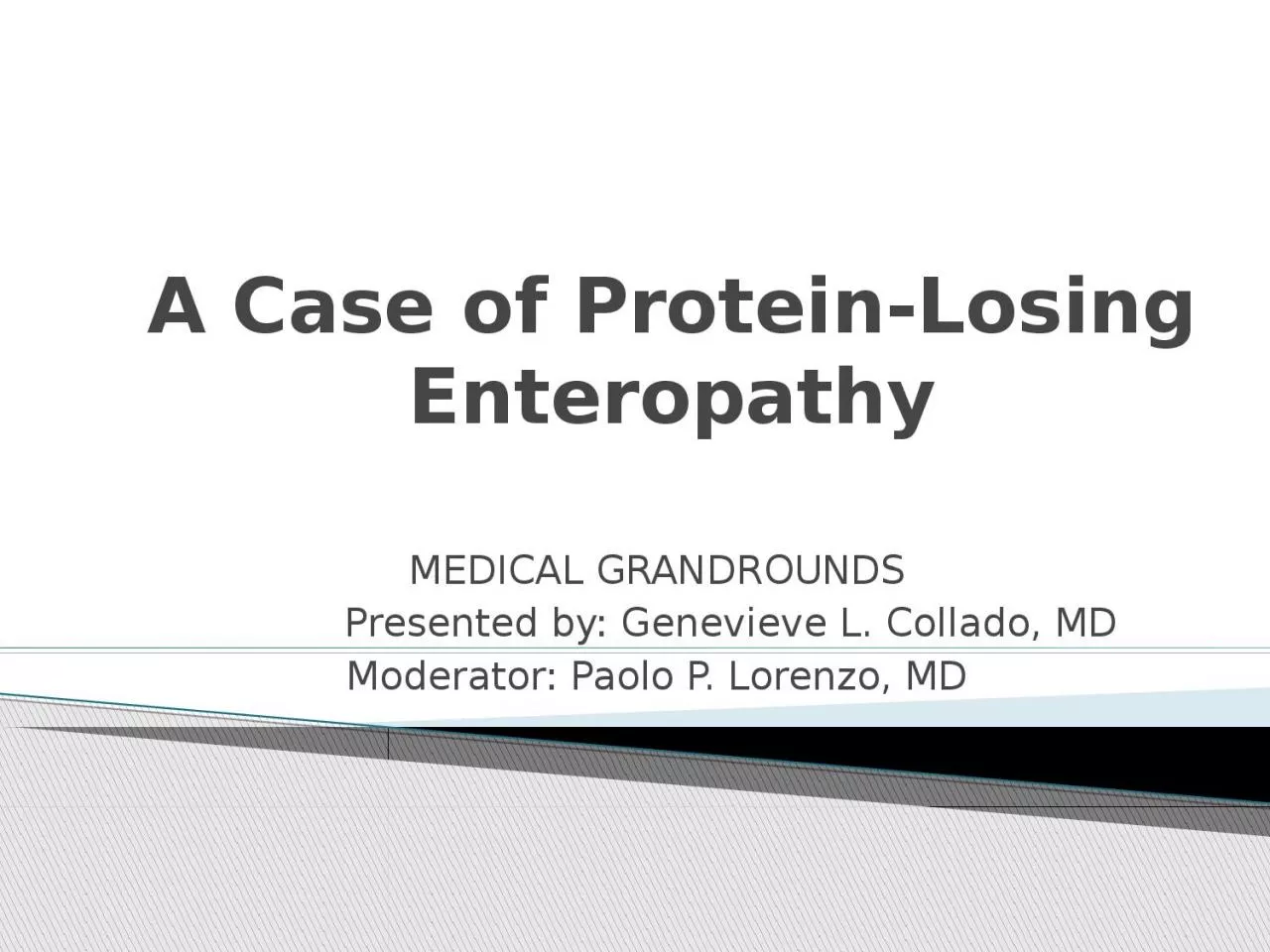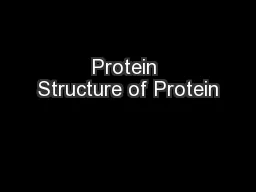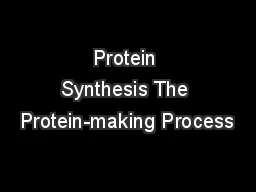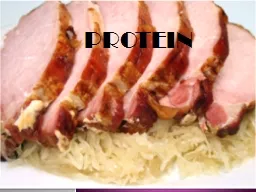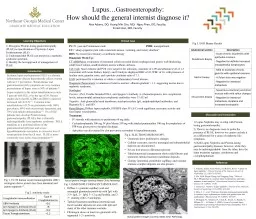PPT-A Case of Protein-Losing
Author : DontBeAScared | Published Date : 2022-08-01
Enteropathy MEDICAL GRANDROUNDS Presented by Genevieve L Collado MD Moderator Paolo P Lorenzo MD To discuss the diagnostic approach to hypoalbuminemia with anasarca
Presentation Embed Code
Download Presentation
Download Presentation The PPT/PDF document "A Case of Protein-Losing" is the property of its rightful owner. Permission is granted to download and print the materials on this website for personal, non-commercial use only, and to display it on your personal computer provided you do not modify the materials and that you retain all copyright notices contained in the materials. By downloading content from our website, you accept the terms of this agreement.
A Case of Protein-Losing: Transcript
Download Rules Of Document
"A Case of Protein-Losing"The content belongs to its owner. You may download and print it for personal use, without modification, and keep all copyright notices. By downloading, you agree to these terms.
Related Documents

